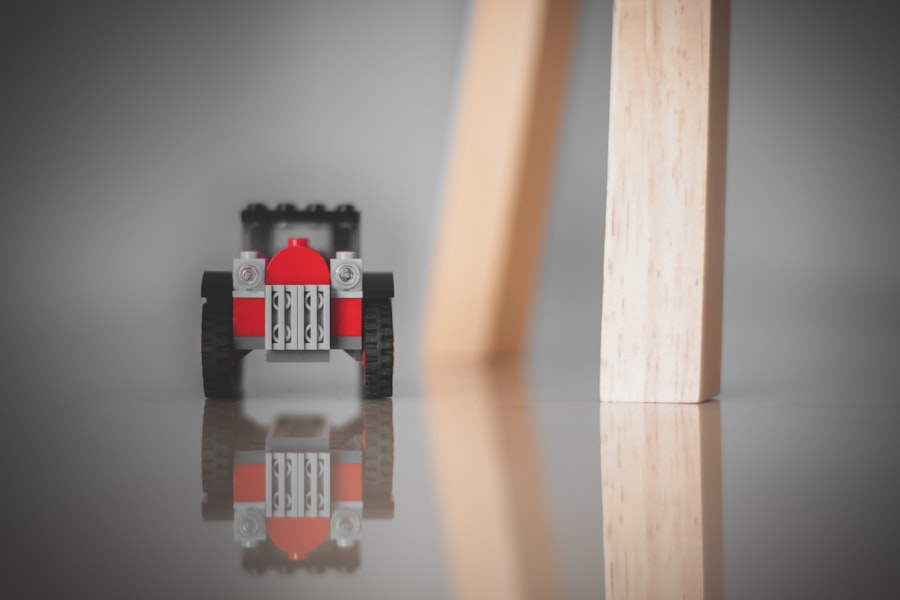In recent years, there has been a significant increase in the use of floor robots in various industries across the United Kingdom. These robots, also known as autonomous mobile robots (AMRs), are designed to navigate and perform tasks in a wide range of environments, from factories and warehouses to hospitals and retail stores. The rise of floor robots can be attributed to advancements in technology, such as artificial intelligence and machine learning, which have made these robots more capable and efficient than ever before.
Summary
- Floor robots are becoming increasingly popular in British industries.
- Floor robots can improve efficiency and productivity in the workplace.
- Floor robots can enhance workplace safety by taking on dangerous tasks.
- The impact of floor robots on job creation and the labour market is still uncertain.
- Floor robots have the potential to revolutionize manufacturing, logistics, and warehousing in the UK.
Advantages of Floor Robots in the Workplace: Efficiency and Productivity
One of the key advantages of using floor robots in the workplace is the increase in efficiency and productivity that they bring. These robots are able to perform repetitive and mundane tasks with precision and speed, freeing up human workers to focus on more complex and value-added activities. For example, in manufacturing industries, floor robots can be used to automate tasks such as material handling, assembly, and quality control. This not only reduces the risk of human error but also allows for faster production cycles and increased output.
Another advantage of floor robots is their ability to work 24/7 without the need for breaks or rest. Unlike human workers who require breaks and sleep, floor robots can operate continuously, leading to increased productivity and reduced downtime. This is particularly beneficial in industries with high-demand production schedules or time-sensitive operations.
The Role of Floor Robots in Enhancing Workplace Safety
Floor robots also play a crucial role in enhancing workplace safety by taking on dangerous tasks that would otherwise put human workers at risk. For example, in industries such as mining, construction, and oil and gas, floor robots can be used to perform tasks in hazardous environments or areas with high levels of toxicity or radiation. This not only protects workers from potential harm but also improves overall safety standards.
In addition to hazardous environments, floor robots can also be used to handle heavy or bulky objects that may pose a risk of injury to human workers. By automating these tasks, floor robots reduce the physical strain on workers and minimize the risk of musculoskeletal disorders and other work-related injuries.
The Impact of Floor Robots on Job Creation and the Labour Market
| Metrics | Impact |
|---|---|
| Job Creation | Increased demand for robot technicians and engineers |
| Potential displacement of low-skilled workers in industries such as manufacturing and retail | |
| Labour Market | Shift towards higher-skilled jobs that require human-robot collaboration |
| Need for retraining and upskilling of workers to adapt to new roles |
While there is concern that the rise of floor robots may lead to job losses, there is also evidence to suggest that they can create new job opportunities and have a positive impact on the labour market. As floor robots take over repetitive and mundane tasks, human workers can be upskilled and redeployed to more complex and creative roles. This can lead to increased job satisfaction and higher wages for workers.
Furthermore, the implementation of floor robots can also lead to the creation of new job roles in areas such as robot maintenance, programming, and supervision. These roles require specialized skills and knowledge, creating opportunities for workers to develop new expertise and advance their careers.
Floor Robots and the Future of Manufacturing in the UK
The use of floor robots is revolutionizing the manufacturing industry in the UK. These robots are capable of performing a wide range of tasks, from material handling and assembly to quality control and packaging. By automating these processes, floor robots are able to increase productivity, reduce costs, and improve product quality.
In addition to these benefits, floor robots also have the potential to increase competitiveness and innovation in the manufacturing sector. By automating repetitive tasks, manufacturers can focus on developing new products, improving existing ones, and exploring new markets. This can lead to increased competitiveness both domestically and internationally.
The Integration of Floor Robots in Logistics and Warehousing

Floor robots are also being increasingly integrated into logistics and warehousing operations. These robots are able to navigate complex environments, such as warehouses with narrow aisles or multiple levels, and perform tasks such as picking, packing, and sorting. By automating these processes, floor robots can significantly increase efficiency and accuracy in logistics and warehousing operations.
One of the key benefits of using floor robots in logistics and warehousing is the ability to handle peak demand periods. During busy periods, such as holiday seasons or promotional events, the demand for order fulfillment can increase significantly. Floor robots can help meet this demand by working alongside human workers to ensure timely and accurate order processing.
Case Studies: Successful Implementation of Floor Robots in British Industries
There are several examples of companies in the UK that have successfully implemented floor robots in their operations. One such example is Ocado, an online grocery retailer, which has implemented a fleet of floor robots in its warehouses to automate the picking and packing process. This has allowed Ocado to significantly increase its order fulfillment capacity and improve customer satisfaction.
Another example is Jaguar Land Rover, a leading automotive manufacturer, which has implemented floor robots in its production line to automate tasks such as welding and painting. This has not only increased productivity but also improved product quality and reduced waste.
Overcoming Challenges: Addressing Concerns and Resistance to Floor Robots
Despite the many benefits of using floor robots in the workplace, there are still concerns and resistance to their implementation. One common concern is the potential for job losses. However, as discussed earlier, there is evidence to suggest that floor robots can create new job opportunities and have a positive impact on the labour market.
Another concern is the cost of implementing floor robots. While there is an initial investment required for purchasing and implementing these robots, studies have shown that the long-term benefits, such as increased productivity and reduced costs, outweigh the initial investment.
To address these concerns and overcome resistance, it is important for companies to communicate the benefits of using floor robots to their employees and involve them in the implementation process. This can help alleviate fears and ensure a smooth transition to a more automated workplace.
The Importance of Training and Upskilling for a Successful Transition to Floor Robots
To ensure a successful transition to a more automated workplace, it is crucial to provide training and upskilling opportunities for employees. This will enable them to adapt to new roles and responsibilities and take full advantage of the benefits that floor robots bring.
Training programs can include technical skills such as robot programming and maintenance, as well as soft skills such as problem-solving, critical thinking, and teamwork. By investing in training and upskilling, companies can ensure that their employees are equipped with the necessary skills to thrive in a more automated workplace.
The Potential of Floor Robots to Revolutionize the Workplace in the UK
In conclusion, the rise of floor robots in British industries has the potential to revolutionize the way we work. These robots bring numerous advantages, including increased efficiency and productivity, enhanced workplace safety, and the potential for job creation and innovation.
While there are challenges and concerns associated with the implementation of floor robots, these can be overcome through effective communication, training, and upskilling. By embracing this technology and harnessing its potential, companies in the UK can stay competitive, improve productivity, and create a safer and more efficient workplace.
If you’re interested in learning more about floor robots and their applications, you might find the article “The Future of Floor Cleaning: How Floor Robots are Revolutionizing the Industry” on Floorbotics’ website quite informative. This article explores the advancements in floor cleaning technology and how floor robots are transforming the way we maintain cleanliness in various settings. To read more about this exciting topic, click here.
FAQs
What is a floor robot?
A floor robot is a type of robot that is designed to move around on the floor. It is typically used for tasks such as cleaning, inspection, and transportation.
What are the different types of floor robots?
There are several different types of floor robots, including vacuum robots, mopping robots, and scrubbing robots. Some floor robots are also designed for specific tasks, such as warehouse robots for transportation and inspection robots for detecting defects in floors.
How do floor robots work?
Floor robots typically use sensors and algorithms to navigate around a space. They may also use cameras or other sensors to detect obstacles and avoid collisions. Some floor robots are also programmed to follow specific paths or patterns.
What are the benefits of using floor robots?
Floor robots can help to save time and reduce labour costs, as they can perform tasks autonomously. They can also improve efficiency and accuracy, as they are less prone to errors than human workers. Additionally, floor robots can help to improve safety by performing tasks in hazardous or hard-to-reach areas.
What are some common applications of floor robots?
Floor robots are commonly used for cleaning tasks in homes, offices, and other commercial spaces. They are also used in warehouses and factories for transportation and inspection tasks. Additionally, floor robots are used in healthcare settings for tasks such as delivering medication and supplies.

